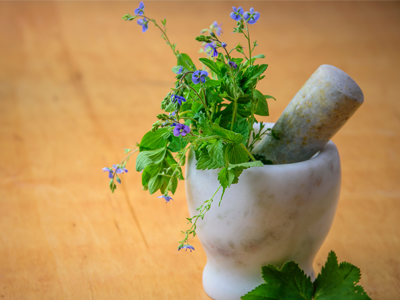Nowadays deciding to be treated only with herbal/holistic/homeopathic remedies is becoming a thing. People want to go back to the origins, being more healthy and natural, find a way to cure themselves minimising the risks and potential side effects. DIY is becoming generally very popular as well, maybe just for improving our own skills. No matter what the reasons are for both these tendencies, I thought it would be interesting to write about it, combining the herbal remedies with the DIY side.
NB: You need some knowledge in order to treat yourself properly, so I suggest you to take this advice only if you have some experience or after you have spoken with a professional herbal therapist for the dosage and type of herb you may need to use.
Collecting the herbs
The very beginning of this process is collecting herbs from a field or your own garden. It is an excellent thing to cultivate your own herbs in the garden, and I would encourage you to consider it, but try to be selective in the number of herbs you are going to grow. If you do not have enough time, space or herbal knowledge, just purchase what you need from a health shop or a recognised herbal supplier. This is the quickest method to start herbalism.
Storage of the herbs
Once you’ve collected your herbs, you need to know how to dry and store them in a proper way, in order not to lose much of their medicinal value.
Dry all herbs carefully:
- Outdoors – spread a layer of herbs on a drying screen in the shade as quickly as possible,
- Indoors – in a dust-free room, at mild temperature, on a drying screen covered away from direct sunlight or
- With artificial heat – be very careful, oven drying under 38°C is difficult and often done improperly.
To store them:
Place them in an appropriate container with a tight fitting lid. Always label and date them and make sure they are used within a year.

Main preparations of herbs
It is time now to describe the most common various herbal preparations. Remember that dosages must be adjusted according to personal need and after consulting an expert.
Capsule: Take the herbal powders and other materials that, because of their nauseous taste or smell, would otherwise be difficult to administer, and place them into a soluble gelatin shell or capsule. These capsules are easy to buy and are made in different sizes for easy swallowing, with numbers 1 to 4, 0, and 00 being the most common.
To fill the capsule, simply take the two halves of a capsule apart and push these halves into the powder and towards each other, pressing the halves together again.
Decoction: This is a process used with hard materials such as roots and barks, chips, etc. Decoctions are intended for immediate use within a 24 hour period (72-hour maximum limit when stored in a very cool place) and are generally made by pouring cold water upon fresh or dried herbs. The harder the material, the longer the simmering and extractive period will be. Consider pulverising them first by mechanical means or pounding. Next, soak the ingredients for 12 hours, then set this liquid on the fire and gradually heat to a slight boil. After the extractive period, drain off the liquid while hot and press the herb hard to make sure that all of the therapeutic ingredients are removed, then let stand until cool.
Infusion: An infusion extracts the active principles of herbs in water, or other fluid, without simmering or boiling. The liquid may be hot or cold, but the flavour of the herb is generally much stronger and the action is much faster when made and administered hot. Generally a standard infusion is used with the lighter herbs (such as the leaves, flowers, etc.), and is made by placing one teaspoonful of finely cut dried herb or two teaspoons of bruised fresh herb into a cup and adding boiling, distilled water; cover and let steep for 15 minutes; strain and drink.
Ointment: It is a soft, semi-solid fatty herbal preparation used for a protective and emollient effect, liquefying when applied externally. Ointments are generally composed of various mixtures of waxes, animal and vegetable oils and the medicinal substances are mixed with them. You can start with olive oil and beeswax, and combine with the herb. Place into a closed container, put into the oven and leave there at low heat (around 80°C) for 3-4 hours.
Periodically, take a fork and lift the fresh herbs to see if they are getting browned, and whether the oil has drawn the value from the herb.
Poultice: This herbal preparation is a soft, semi-liquid mass made of some substance mixed with water, vinegar or other, and used for supplying heat and moisture to an area, or to act as a local stimulant. When using fine powder, use just enough moisture to make a thick paste, and when using the granulated form, a thick paste may be made with a mixture of water and cornmeal. If fresh green leaves are used, simply heat, bruise, triturate or chop the leaves up finely, and apply to the affected parts.
Syrup: A thick, sticky liquid preparation made by dissolving sugar into distilled water, decoctions, infusions, juices, or other watery solution, and used to suspend medicinal or flavouring agents for easy administration alone, or to combine with other preparations. For making a syrup with herbs, settle out the heavier matter and pour off the clear liquid; then add to that 1 and 3/4 pounds of sugar, place into an appropriate vessel, heat until the sugar is melted, cool, and store for future use.



